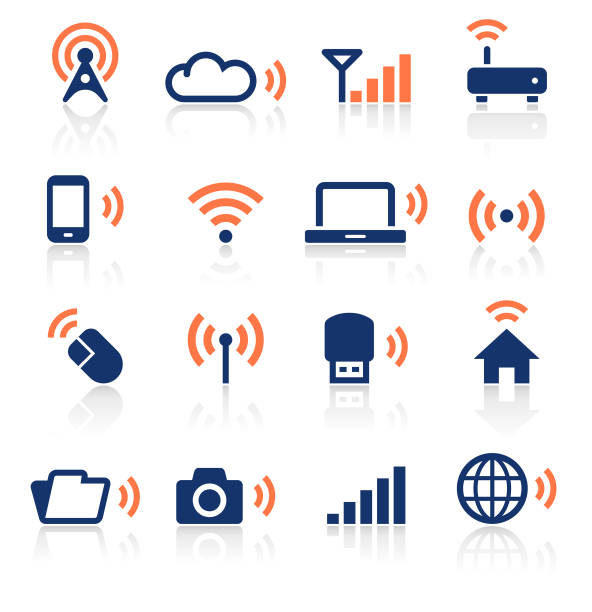In today’s digital and interconnected age, having a reliable internet connection is crucial for both personal and professional activities. With the variety of options available, choosing the right type of internet connection can be a daunting task. From DSL to satellite internet, each connection type comes with its own set of advantages and limitations.
But Fret not. We are here to help. In this guide, we’ll delve into the details of the best internet connection types, comparing their features, benefits, and drawbacks to help you make an informed decision. Let’s start reading without any further delay!
DSL (Digital Subscriber Line)
DSL, short for Digital Subscriber Line, is one of the most common types of internet connections. It utilizes existing telephone lines to transmit digital data. One of the main advantages of DSL is its widespread availability, especially in suburban and rural areas where other high-speed options may be limited. However, DSL speeds can vary significantly depending on factors such as distance from the provider’s central office.
Cable Internet
Cable internet relies on coaxial cables to deliver internet access. It offers higher speeds compared to DSL and is widely available in urban and suburban areas. Cable internet is known for its reliability and consistent speeds, making it a popular choice for households and businesses alike. However, congestion during peak hours can affect performance.
Fiber Optic Internet
Fiber optic internet is the fastest and most reliable option currently available. It utilizes fiber optic cables to transmit data using light signals. Fiber optic connections offer symmetrical upload and download speeds, making them ideal for activities such as streaming, gaming, and video conferencing. While fiber optic networks are expanding, they are still limited primarily to urban areas.
Satellite Internet
On the other side, Satellite internet is an option for those in remote or rural areas where traditional wired connections are not available. It works by transmitting data between a satellite dish installed at the user’s location and satellites orbiting the Earth. Satellite internet offers wide coverage but tends to have higher latency and lower speeds compared to other types of connections.
Fixed Wireless Internet
Fixed wireless internet delivers internet access using radio signals instead of cables. It is particularly useful in areas where laying cables is impractical or cost-prohibitive. Fixed wireless connections can offer decent speeds and reliability, but they may be susceptible to interference from environmental factors such as weather conditions.

Mobile Broadband
Mobile broadband provides internet access through cellular networks, allowing users to connect to the internet using smartphones, tablets, or mobile hotspots. It offers portability and flexibility, making it a popular choice for people on the go. However, mobile broadband speeds can vary depending on network coverage and congestion.
Comparative Analysis
Speed
- Fiber optic internet typically offers the fastest speeds among all connection types, with symmetrical upload and download speeds reaching up to 1 Gbps or higher.
- Cable internet follows closely behind, offering high-speed connectivity suitable for streaming, gaming, and other bandwidth-intensive activities.
- DSL speeds can vary depending on factors such as distance from the provider’s central office, but it generally offers lower speeds compared to fiber and cable.
- Satellite internet tends to have slower speeds and higher latency due to the distance data must travel to and from satellites in orbit.
- Fixed wireless and mobile broadband speeds can vary depending on factors like signal strength and network congestion, with speeds typically lower than fiber and cable.
Reliability
- Fiber optic internet is known for its reliability and consistency, with minimal downtime and fewer service interruptions.
- Cable internet also offers reliable connectivity, although network congestion during peak hours can affect performance.
- DSL reliability can vary depending on the quality of the copper lines and infrastructure in a particular area.
- Satellite internet may experience disruptions due to weather conditions or obstructions blocking the satellite signal.
- Fixed wireless reliability can be affected by environmental factors such as interference from nearby structures or terrain.
- Mobile broadband reliability may vary depending on network coverage and signal strength in a particular location.
Cost
- Fiber optic internet tends to be more expensive than DSL and cable but may offer better value for users requiring high-speed, reliable connectivity.
- Cable internet typically falls within a mid-range price point, offering a balance between speed and affordability.
- DSL is often the most affordable option, making it suitable for budget-conscious users, although it may not offer the same speeds or reliability as fiber or cable.
- Satellite internet can be relatively expensive due to the cost of equipment and installation, making it less economical for some users.
- Fixed wireless and mobile broadband plans may vary in cost depending on data allowances and speeds offered by the provider.
Availability
- Fiber optic internet is primarily available in urban and suburban areas, with limited availability in rural regions.
- Cable internet is widely available in urban and suburban areas but may not reach all rural locations.
- DSL is more widely available than fiber optic and cable, with coverage extending to many rural and remote areas.
- Satellite internet offers broad coverage and can reach remote or underserved areas where wired connections are not feasible.
- Fixed wireless internet can provide connectivity in areas where traditional wired connections are unavailable, although coverage may be limited in some regions.
- Mobile broadband coverage is extensive, with cellular networks reaching most populated areas, although rural coverage may be sparser.
Latency and Data Caps:
- Fiber optic and cable internet typically have low latency, making them suitable for real-time applications like gaming and video conferencing.
- DSL and satellite internet may have higher latency due to the nature of their technologies, which can impact activities like online gaming.
- Satellite internet plans often come with data caps or throttling policies, which may limit usage for activities like streaming or downloading large files.
- Fixed wireless and mobile broadband plans may also have data caps or throttling policies, depending on the provider and plan.
| Call 866-861-4084 for Internet Deals |
Choosing the Right Internet Connection
However, choosing the right internet connection is an important decision that can significantly impact your online experience. Here are some factors to consider when selecting an internet connection type. Look at it for better understanding.
Speed Requirements:
Assess your internet usage habits and determine the speed requirements for your household or business. If you engage in activities such as streaming HD videos, online gaming, or video conferencing, you’ll likely need a high-speed connection like fiber optic or cable internet.
For basic web browsing, email, and social media usage, a lower-speed connection such as DSL may suffice.
Reliability:
Well, consider the reliability of the internet connection in your area. Look for the track record of different providers and connection types regarding uptime, service interruptions, and customer satisfaction.
Alternatively, Fiber optic and cable internet are generally considered more reliable than DSL, satellite, or fixed wireless connections due to their infrastructure and technology.
Location:
Your geographic location plays a significant role in determining the availability of different internet connection types. Urban and suburban areas typically have access to a wider range of options, including fiber optic and cable internet.
If you live in a rural or remote area, your choices may be limited to DSL, satellite, fixed wireless, or mobile broadband.
Budget:
Consider your budget constraints when choosing an internet connection type. Fiber optic internet tends to be more expensive than DSL or cable, but it may offer better value in terms of speed and reliability.
Evaluate the cost of installation, equipment, and monthly service fees for each option and choose a plan that fits within your budget.
Data Usage:
Determine your data usage needs and whether the internet connection type you’re considering imposes any data caps or throttling policies.
Satellite, fixed wireless, and mobile broadband connections often have data caps, which may restrict your usage or incur additional charges if exceeded.
Future Expansion:
Consider your future needs and whether the internet connection type you choose can accommodate potential growth in usage or devices.
Technologies like fiber optic and cable internet offer scalability and room for expansion, making them suitable for households or businesses expecting increased bandwidth demands over time.
Customer Support:
Research the customer support and service quality offered by different internet service providers. Look for providers with responsive customer support teams and reliable technical assistance in case of issues or concerns.
To know more about internet connections, check our guide.

Future Trends in Internet Connectivity
Looking ahead, advancements in internet technology are poised to revolutionize connectivity further. Technologies such as 5G, satellite constellations, and mesh networks hold the promise of faster speeds and broader coverage. As these technologies continue to evolve, the landscape of internet connectivity will undoubtedly undergo significant changes.
Conclusion
In conclusion, comparing internet connection types is crucial for finding the right solution to meet your needs. Whether you prioritize speed, reliability, or affordability, there’s a connection type out there for you. By understanding the features and limitations of each option, you can make an informed decision that ensures a seamless online experience.
Unique FAQs
Is fiber optic internet available everywhere?
Fiber optic internet is primarily available in urban areas, but coverage is expanding gradually. Rural areas may still lack access to fiber optic networks.
Can I use satellite internet for online gaming?
While satellite internet can support online gaming, its higher latency may result in slower response times compared to other connection types, making it less than ideal for competitive gaming.
Are there any data caps with mobile broadband?
Many mobile broadband plans come with data caps or throttling policies, especially for unlimited plans. It’s essential to check with your provider to understand any limitations.
How can I improve the speed of my DSL connection?
To improve DSL speeds, consider upgrading to a higher-tier plan if available. Additionally, ensuring that your modem and wiring are in good condition can help optimize performance.
What is the future of internet connectivity?
The future of internet connectivity lies in emerging technologies such as 5G, satellite constellations, and mesh networks. These innovations hold the potential to deliver faster speeds and more reliable connections to users worldwide.

Meet Jennifer Harper, a wordsmith extraordinaire who has been shaping the digital landscape with her creative prowess for the past two years. Not just a content writer; she is a storyteller who brings the content to life. Her passion for internet trends, memes, and the ever-evolving world of entertainment is evident in every piece she creates. Jennifer doesn’t just follow trends; she sets them.